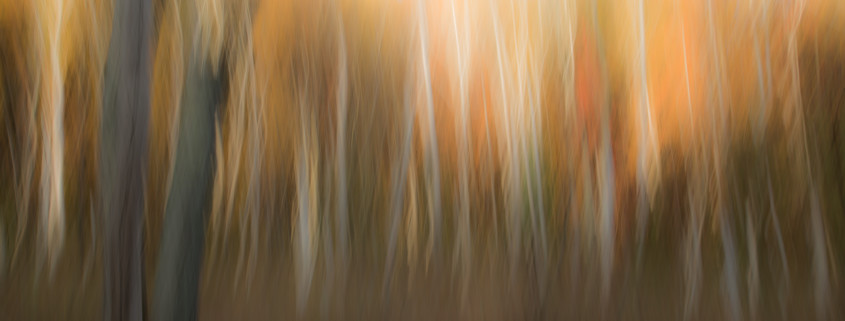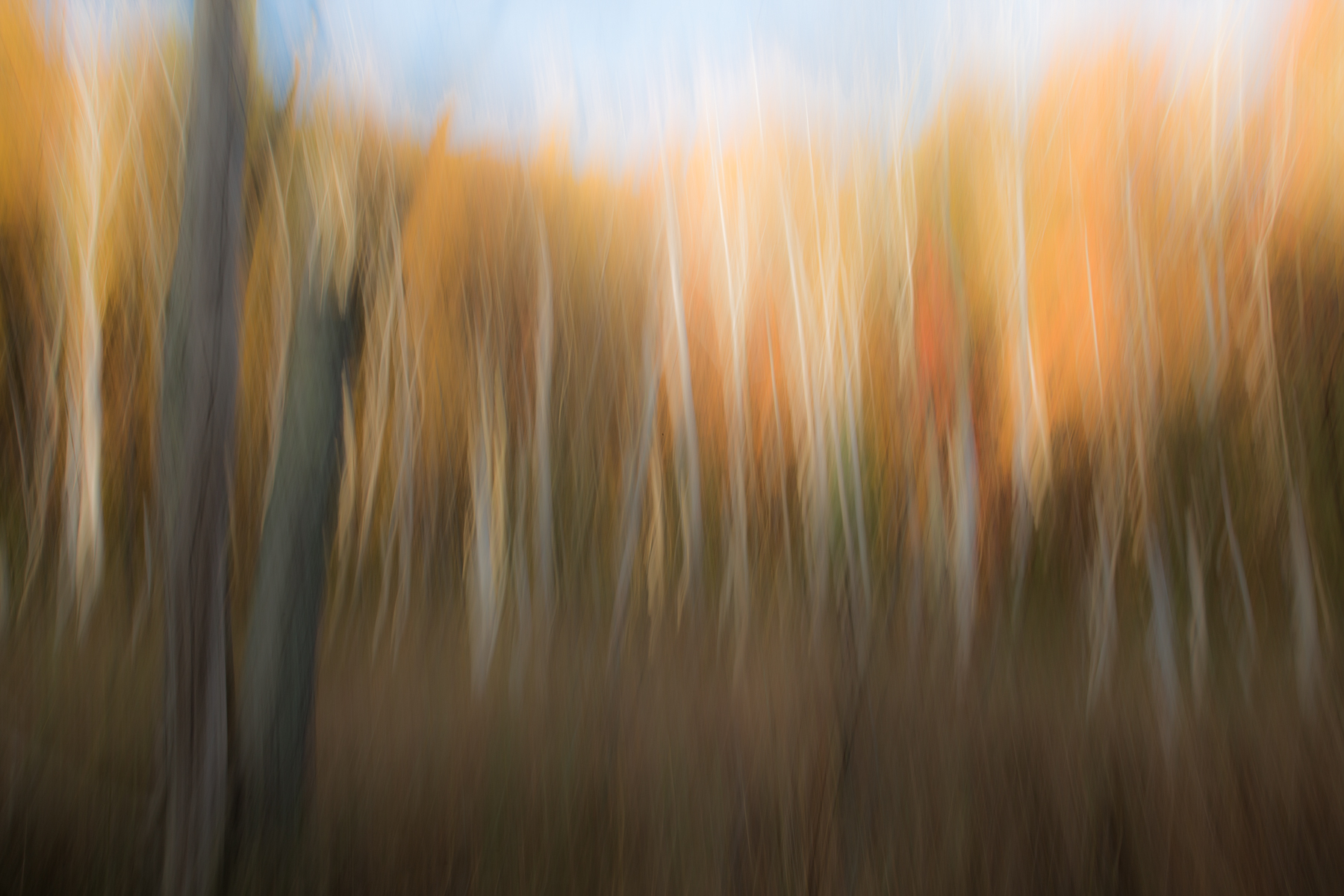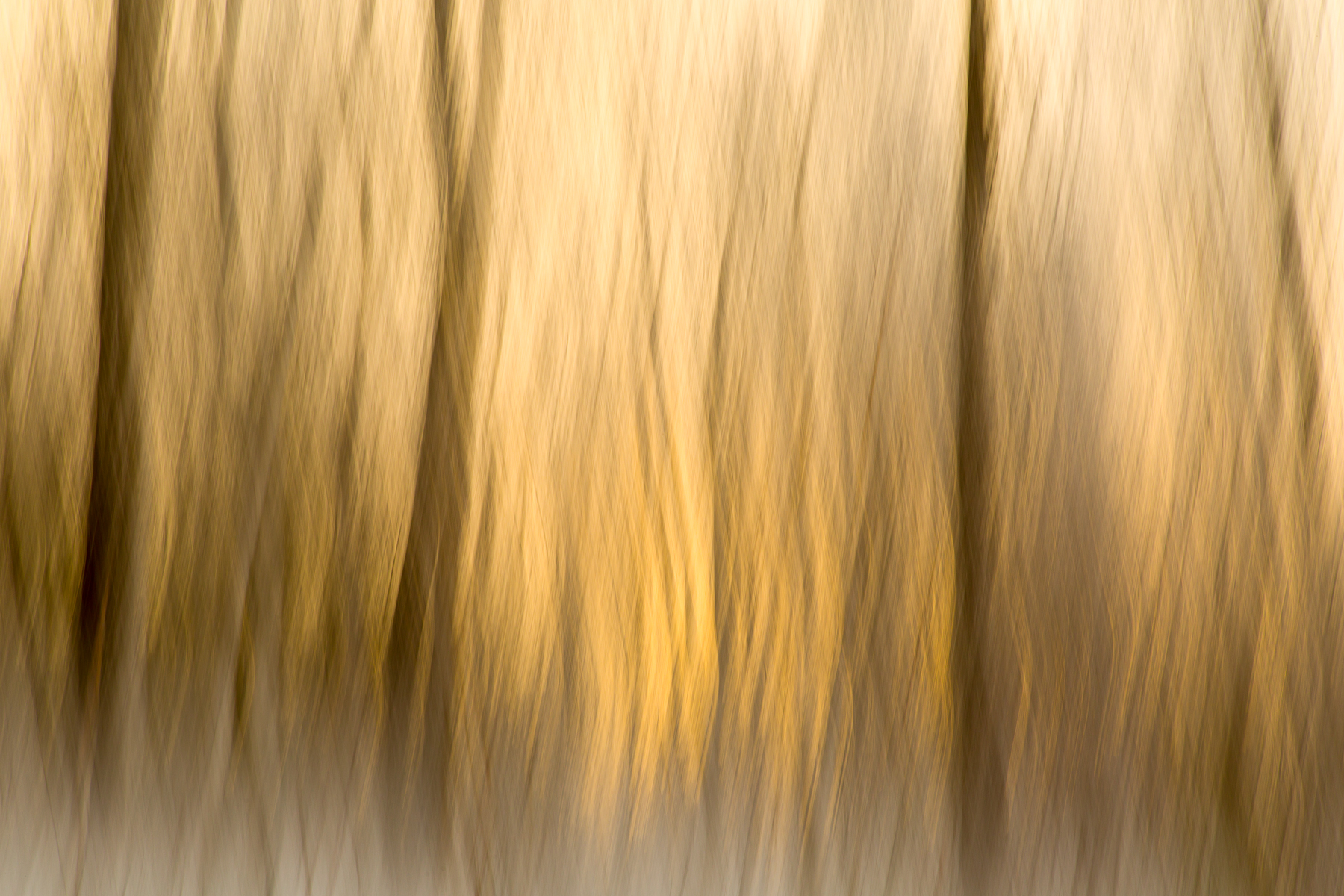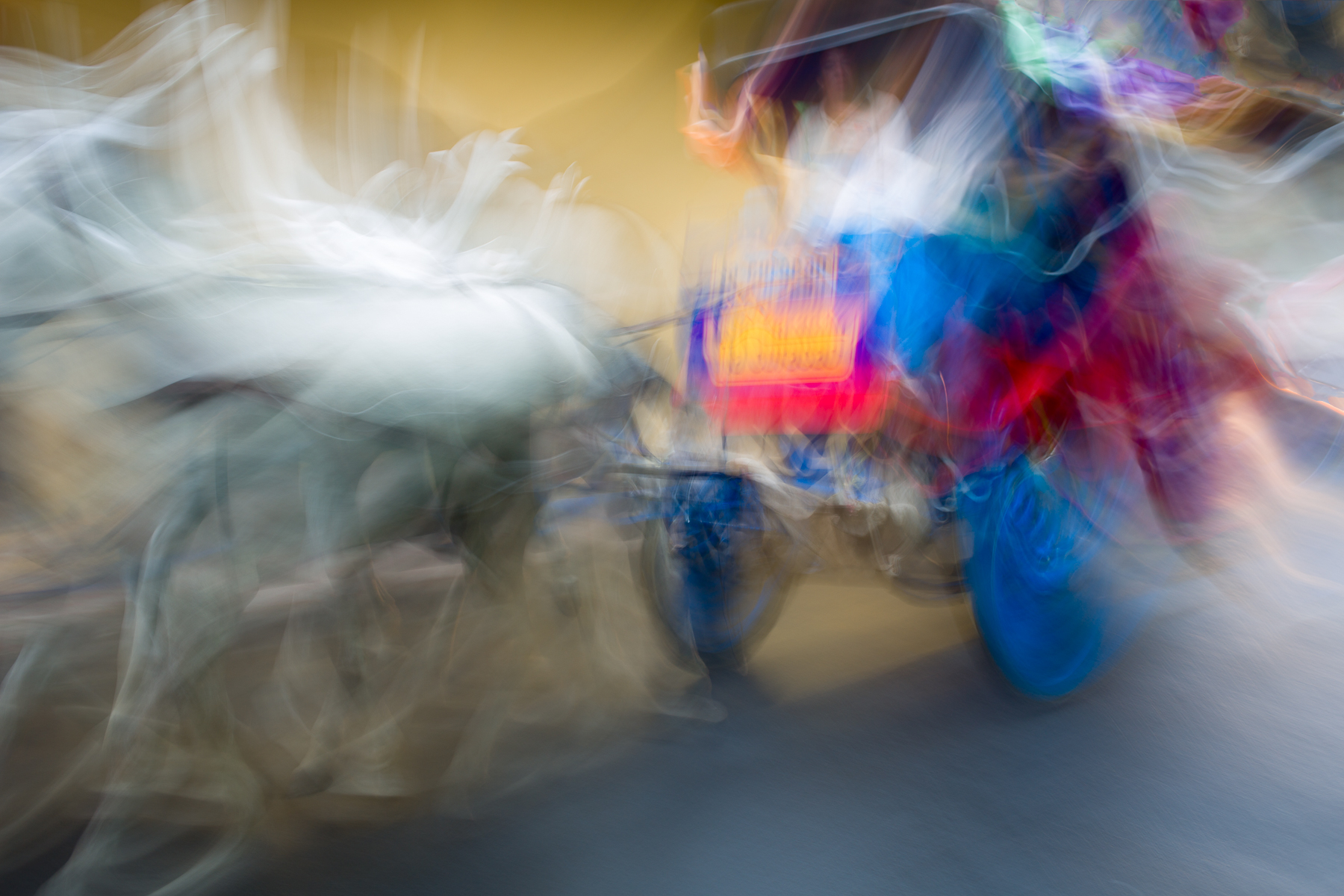A Different Kind of Landscape Photography
Intentional Camera Movement
Every now and then, I feel less inspired and need to force myself to look around for photo subjects. Sometimes I simply can’t find the proper interpretation for a scene. Moreover, as I walk to desired photo locations, I often walk in less interesting areas where I cross potential Intentional Camera Movement (ICM) scenes.
How to Experiment with ICM
In order to succeed with ICM, consider the following:
- Use a slow shutter speed. I shot my most successful pictures between 1/8 and one second.
- Avoid contrasted scenes; light recording by the sensor is additive. Photo sites are just like water buckets – once full, there is no more space.
- Movement should approximate the general orientation (photos #1 and #2) or movement (photo #3) of the subject.
- Strange and interesting results can occur, as you can see in picture #3.
Example of ICM – Vertically Pivoting the Camera
In a forest of aspen trees, I used the camera while slowly pivoting it up and down on its axis at a shutter speed of 0,3 seconds and a focal length of 30mm. As you can see, some sky is visible along with a darker area near the ground. A dark group of trees on the left side create an extra interest point. My goal was to compose this photo with an off-center focal point.
Example of ICM – Vertically Moving the Camera
For this second picture, I moved the camera up and down instead of pivoting it on its axis. The focal length was 82mm and the shutter speed was 1/6 of a second. As the focal length increases, the amount of movement required to produce the same effect decreases. The subject of this photo is a shallow patch of dark trees on a winter day. The glow behind the trees is from the rising sun just below the horizon. Would you have guessed that there is snow at the base of the trees?
Example of ICM – Following the Subject
In this third picture is a one-horse carriage moving through a street in front of a yellow brick wall. I used a focal length of 40mm for 0.6 seconds at f/4.5. The result is rather surprising.
When composing the scene, remember that light is additive. Each photo site can only receive a certain amount of light. When something moves in front of something else, the object that is reflecting the most light will be visible. The darker parts, whether they’re in the front or back, will not show.
The white horse in this last picture is a good example of this. It is far more visible than the yellow brick wall even though it was only in the area for a limited amount of time.
The darker colored carriage remained in approximately the same place on the sensor while the shutter was open which explains why it is recognizable in front of the yellow brick wall.
Out of 50 pictures, only a few will be worth showing. I have taken hundreds of such photos and from these there are only six pictures that I like. However, because of my extended experimentation with this technique, I better understand the variables that produce results in line with my vision.
I will not lie to you… this third picture was a mistake on my part. This mistake caused me to question the ‘hows and whys’ of its results. Since that moment in July of 2012, I’ve been experimenting with Intentional Camera Movement. Two of my ICM pictures have been exhibited in a local art gallery.
Now it’s your turn. Do you have any experience with ICM? Will you try ICM for your own art photography? I can’t wait to hear your stories.
Want to learn more? Check out the following article on Visual Wilderness







I am so excited to have stumbled across the Visual Wilderness Facebook page tonight! I have had a lot of fun with ICM and night lights but have never tried it otherwise. I can’t wait to do so. Thanks for the inspiration.
Brenda
Glad you liked our blog….More articles to come.